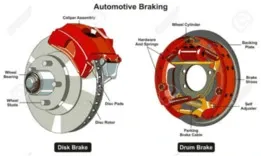INTRODUCTION-
Replacing a vehicle right now can be expensive. A shortage of new cars has pushed demand higher for quality used automobiles, resulting in premium prices. So consider spending a few dollars to keep your current car in top condition rather than paying thousands extra to replace it. Keeping your car on the road longer is about being mindful of the way it operates when it comes to both efficiency and safety{1}
KNOWLEDGE PROVIDE BY COMPANY BOOK-
All internal parts of the vehicle are clearly detailed in the browser provided with the car to the owner for their car maintenance and safty. An intriguing inquiry was kept in touch with Motor Company by an OLD PERSON, through its kids' site. The inquiry was, what number of parts does it take to make a vehicle? However, the response wasn't straightforward! It might have been essentially as straightforward as expressing the significant parts, similar to transmission and motor, however, CAR COMPANY didn't feel that was fitting. They required careful work to count each and every individual part that went into a vehicle and thought of a free figure of 30,000. That is a ton of stray pieces to inspire you to deal with time, couldn't you say? Each and everyone is one of a kind. You can look in the engine of the crackpot three-chamber Geo Metro and see a large number of the very parts that you would find if you somehow happened to look in the engine of a BMW 850i and see a gigantic V12.
You may not want to keep your car on the road for three decades, but here are five inexpensive ways to keep your car running longer.
SOME IMPORTANT PART OF YOUR CAR AND WORKING YOU KNOW BEFORE PURCHASE-
1. One of these substances can make your car go faster for a short period of time — which one is it?
 |
| Nitrous Oxide |
Explain:-Correct Answer!: The starter initiates the first part of a chain reaction that makes an engine run. As you turn the key in your ignition, the starter taps the flywheel on the shoulder and politely asks it to turn. This rotation allows air into the engine, which enables the fuel to ignite; and therein begins the four-stroke process of intake, compression, combustion and exhaust.
 |
| Cap It Off The Main Things You |
Explain:-Correct Answer!: Correct Answer!: If a vehicle's engine were an outfit, the distributor cap would be the matching belt and shoes that tie it all together. The distributor cap allows an engine to run efficiently by instigating a spark at the exact moment the gases are at their most condensed. Symptoms of a failing distributor cap include an incredibly rough idle and difficulty starting the engine.
3. Can you gauge what part of the braking system this is??
 |
| Common Automotive Braking System |
Explain:-Correct Answer! : Without the brake calliper, no stopping would occur. The calliper pinches the brake pad into the rotor to create friction, which eventually brings the vehicle to a stop. An excellent way to see how a calliper works are to observe a motorcycle brake's pinching process. There are more advanced forms of brake callipers, but they all work on the same principle, to connect the pad to the rotor.
 |
| How to Flush Your Vehicle’s Cool |
Explain:-Correct Answer! Don't be surprised when you hear that a water pump is a component that propels water through the engine block, radiator and various other parts to keep the engine from overheating. What may surprise you is that a water pump works by using centrifugal force. It slings water from a centre point, much like the force your washing machine uses to get the water out of your clothes during the spin.
 |
| Core Radiator Compat |
Explain:-Correct Answer! The radiator acts as a bladder for the entire coolant system. After the long journey through the engine bay, antifreeze takes a little rest in the radiator, where it takes a moment to cool off before being sent back to do the taxing task of keeping the hot engine at a comfortable operating temperature. Remember, never try to open a hot radiator cap!.
6. Keep the plug in the jug as you identify what this integral part of a car engine is!?!
ANSWER= (B) Type options
Explain:-Correct Answer! It's hard to believe that the spark plug has been igniting engines for almost 160 years, but it's true! A Belgian engineer by the name of Lenoir utilized a spark plug in his invention, the internal combustion piston drive engine. Lenoir might have been the first to patent, but it wasn't until a few decades later that inventors like Robert Bosch and Nicola Tesla took the simple plug and turned it into something truly brilliant..


